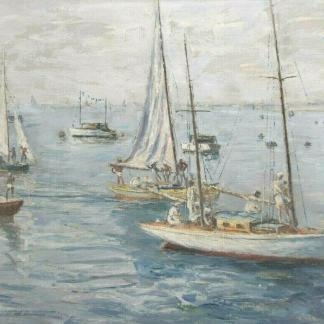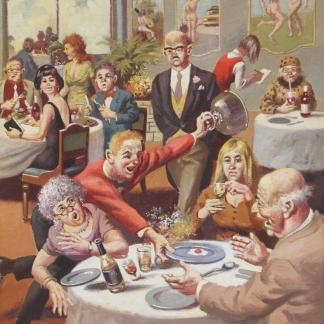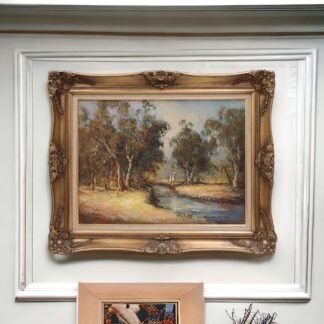Bio
Dinny Nolan Tjampitjinpa (Australian Aboriginal 1935-)
Dinny Nolan Tjampitjinpa was born west of Mt. Allan in 1935 near the area of Yuendumu. In the early years he worked as a stockman for many cattle stations in the Northern Territory before moving to Papunya, as did many of his relatives during this time. He went to paint for the Papunya Tula Artists in the mid-1970s.
Dinny Nolan Tjampitjinpa is a senior and highly respected member of his tribe as well as a Lawman. He is a recognised leader for Rainmaking and Water Dreaming ceremonies.
Dinny Nolan is among one of the first men to put the traditional body paintings for ceremonies and sand drawings on to canvas. He painted his Dreamings with his brother Kaapa Tjampitjinpa and his two cousins Clifford Possum Tjapaltjarri and Billy Stockman Tjapaltjarri (Kaapa & Billy worked along with Long Jack Phillipus Tjakamarra, to paint the “Honey Ant Dreaming” mural on the Papunya School Wall which was painted in 1971, This event marked a major turning point in the history of Australian Aboriginal art, and was particularly important in helping launch the Western Desert Art Movement).
He later travelled to Melbourne in 1977 for an exhibition of Papunya Tula paintings and in 1981 he visited Sydney to paint the first ground painting to be seen outside of Central Australia.
Dinny Nolan’s has a number of paintings that are held in the Australian National Gallery collection, including one of Dinny Nolan’s designs which was used for a stained glass window in the National Gallery of Victoria.























